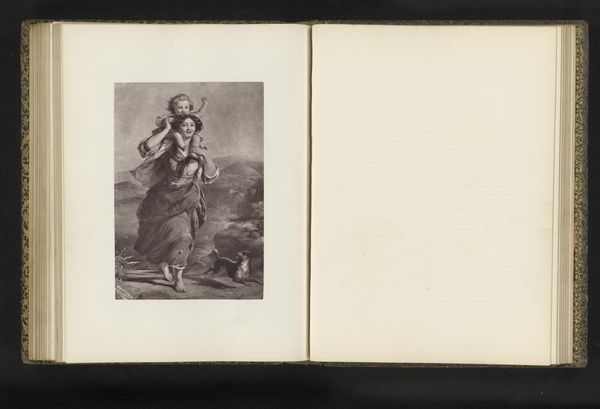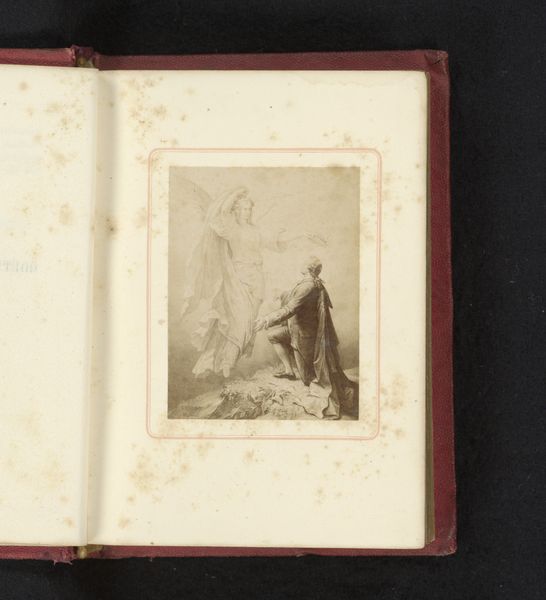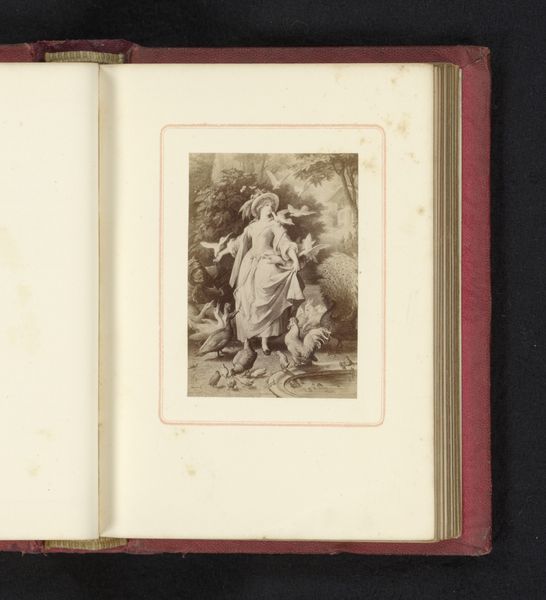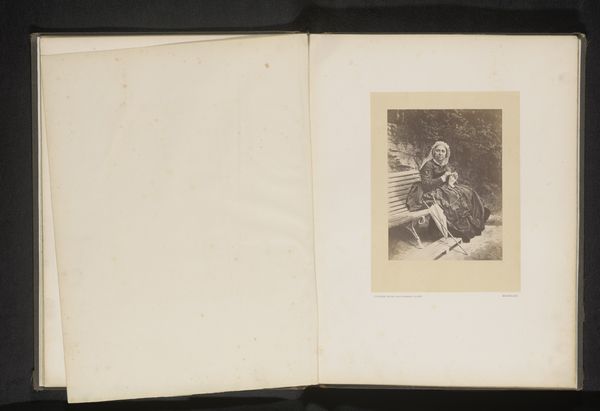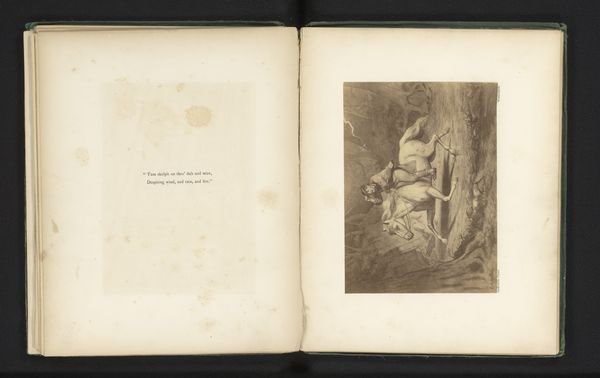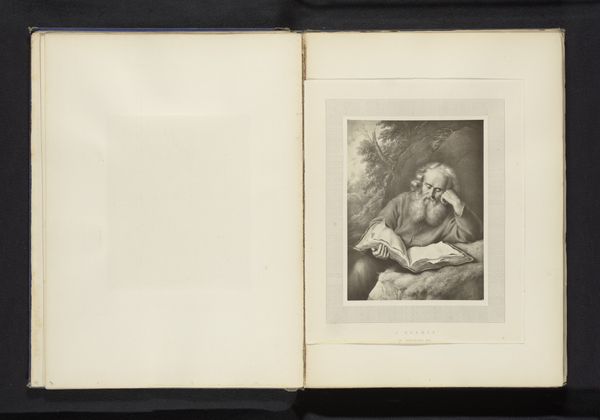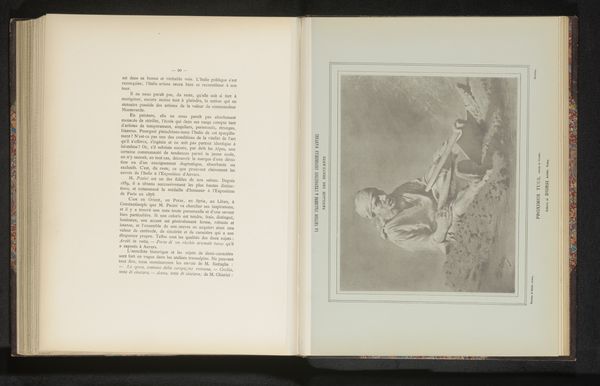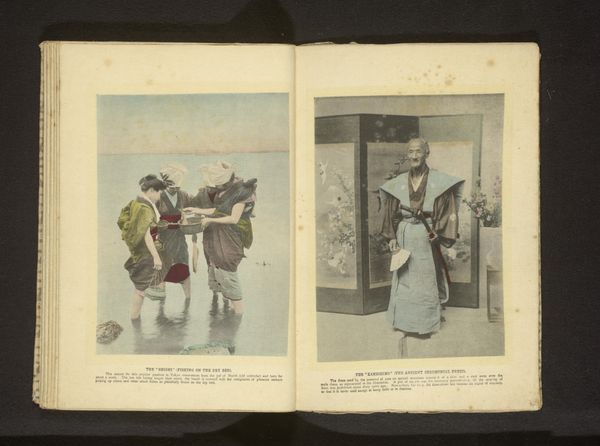
Dimensions: height 230 mm, width 167 mm
Copyright: Rijks Museum: Open Domain
Curator: This albumen print, titled "Blinde vrouwelijke straatmuzikant," presents us with an evocative scene. Its creator remains anonymous, dating from before 1900. It's striking, wouldn’t you agree? Editor: Absolutely. The immediate impression is one of raw emotion. Her posture, the way she holds her instrument…there's an unbridled energy despite the implied hardships. You can almost hear her singing. Curator: Note the deliberate staging. The figure occupies a central position, anchoring the composition, and every formal element channels our sight directly to the figure and her animated expression. The muted tones amplify this central focus, allowing the emotion to be prominent.. Editor: Speaking of materials, albumen prints, while beautiful, involve a complex process of layering egg whites onto paper, then sensitizing it with silver nitrate. Consider the labour, the delicate craft required to capture this image back then. That craftsmanship is integral to the aesthetic. It’s interesting how photography from this era captures subjects with more dignity, more authenticity, as if stripping away the artificial layers of performance that we find so pervasive in art now. Curator: Yes, but we can appreciate that it evokes the Ukiyo-e style and Japonism’s profound impact on Western art during that period. Note the calculated placement within the negative space. Consider how it draws on design elements derived from printmaking traditions. The background, however blurry it is, doesn’t overwhelm the subject. Editor: But it's also interesting that this isn’t some upper-class individual being idealized. We are seeing an everyday figure of labor represented; we are reminded that the economics of art are always in flux. This might explain its accessibility despite formal compositional elements. Curator: An excellent point! By merging formalism with our sense of its physical construction and historical era, it enhances our ability to see, and our understanding of this composition's meaning deepens. Editor: Agreed. The blending of materials, labor, and compositional control enables us to examine all artistic production's rich complexities, making us question what constitutes true artistry.
Comments
No comments
Be the first to comment and join the conversation on the ultimate creative platform.
